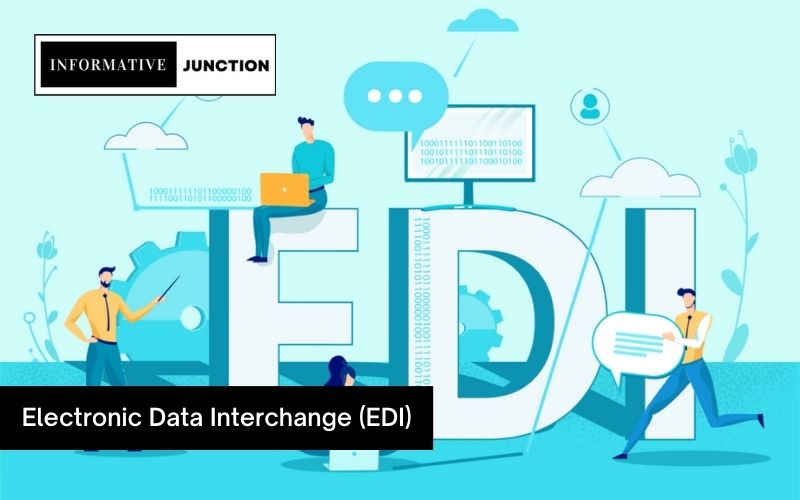In today’s fast-paced, highly competitive, and cooperative corporate world, staying abreast of cutting-edge technologies is essential. One such technological marvel that has emerged as a linchpin for modern business communication is Electronic Data Interchange, widely known as EDI. This comprehensive guide aims to take an even deeper dive into the intricate facets of EDI, from its fundamental principles to its transformative impact on business efficiency, providing you with a holistic understanding of its potential and how it can be harnessed for sustained success.
Understanding the Core Concepts of Electronic Data Interchange (EDI)
Electronic Data Interchange (EDI) in a Nutshell
Electronic data interchange was developed with the primary goal of improving the efficiency and safety of exchanging business-critical documents between organisations. Invoices, purchase orders, shipping notices, and a myriad of other documents are transmitted in a standardized electronic format, rendering the need for traditional paper-based systems obsolete.
Streamlining Data Transfer through Standardization
The crux of EDI’s effectiveness lies in the meticulous standardization of message formats and protocols. This meticulous strategy ensures smooth interoperability across various platforms, allowing data to flow freely from one to the next.
Unlocking the Benefits of EDI Implementation
1. Improved Operational Efficiency
The foremost advantage of incorporating Electronic Data Interchange into business operations is the substantial enhancement of efficiency. By automating the exchange of information, businesses can significantly reduce the time and resources traditionally spent on manual data entry. This not only expedites transaction processing but also liberates valuable human resources for more strategic tasks.
2. Error Reduction and Enhanced Accuracy
Manual data entry is inherently susceptible to errors, leading to costly mistakes and processing delays. EDI mitigates this risk by automating data transfer, reducing the likelihood of transcription errors, and ensuring data accuracy. The result is not only improved reliability of information but also an enhancement of overall business credibility.
3. Tangible Cost Savings
The automation provided by EDI translates directly into tangible cost savings for businesses. The reduction in manual labor, paper usage, and expenses associated with errors contributes to a more streamlined and cost-effective operation. In the long run, these savings build up and improve the bottom line.
Strategies for Successful EDI Implementation
1. Thorough Business Needs Assessment
Embarking on an EDI implementation journey necessitates a thorough assessment of business needs. Planning the scope of EDI integration requires first determining which processes can be automated. This foundational understanding sets the stage for a successful implementation.
2. Selecting the Right EDI Solution
The selection of an appropriate EDI solution is pivotal to successful implementation. Scalability, transaction complexity, and company size are all crucial factors to think about. Whether opting for in-house EDI software or a cloud-based service, alignment with business goals and future growth plans is paramount.
3. Seamless Integration with Existing Systems
Achieving a successful EDI implementation requires seamless integration with existing systems. Collaboration with the IT team is essential to ensure that the chosen EDI solution integrates smoothly with ERP, CRM, and other critical business systems. Compatibility is the linchpin for achieving a smooth and efficient data exchange process.
Anticipating the Future: Evolution of Electronic Data Interchange
As technology continues to evolve, so does the landscape of Electronic Data Interchange. The future promises exciting developments, with the integration of blockchain and artificial intelligence poised to further enhance EDI capabilities.
Conclusion: Embracing the Power of Electronic Data Interchange
In conclusion, Electronic Data Interchange stands as a beacon of efficiency in the realm of modern business communication. Its ability to streamline operations, reduce errors, and drive cost savings positions it as an invaluable tool for businesses of all sizes. By understanding the benefits of EDI and strategically implementing it, organizations can unlock new levels of efficiency, setting the stage for success in today’s competitive market. Embrace the power of Electronic Data Interchange and pave the way for a more efficient and connected future.
No matter the size of your company, EDI has the ability to revolutionise your business processes and help you keep up with the ever-changing business landscape. The adoption of Electronic Data Interchange is not just a technological upgrade; it’s a strategic move toward a future where efficiency, accuracy, and seamless communication are the driving forces of sustained success. Explore the possibilities, implement with foresight, and position your business for a future where efficiency knows no bounds.
Read More Informative Blogs on Informative Junction



